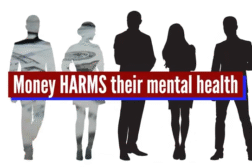Orlando, Fla. (Ivanhoe Newswire) — Life moves fast, from long workdays to late nights with friends — many Americans are running on empty! A new poll found 53 percent of Americans rate their sleep quality as fair or poor. Now a TikTok trend called bed rotting, is offering a curious kind of self-care.
Now 49 percent of Gen Zers say they stay in bed, and 41 percent of Millennials said they are doing the same! It’s called bed rotting! It’s a TikTok trend where people stay in bed for an entire day or weekend, not to sleep but to eat, scroll, binge shows, or simply zone out.
Supporters call it a form of self-care. Experts say short periods can calm the body and ease stress and exhaustion, giving you a break from the grind.
Too much bedtime can slow circulation, raising the risk of blood clots and even stroke. Your mental health is also at risk.
“Avoidance or possible depression or some other, or maybe even anxiety, then you’re not coping. You are hiding from,” said M Clark Canine, MA, LMHC, NCC, The Counseling Group.
Spending hours awake in bed also trains your brain to associate the bed with wakefulness instead of rest, making it harder to fall asleep when you really need to. If you find yourself bed rotting regularly, psychologists recommend looking for the root cause and taking small steps to re-engage with daily tasks.
“Take one step toward getting that thing done,” explained Canine.
So, if you’re tempted to join the trend, remember: the goal is to recharge, not to rot.
If you plan to indulge, set a hard stop. Experts recommend a clear time limit and a quick movement break like stretching or a short walk every hour. And when you finally climb out of bed, check in with yourself: do you feel refreshed or drained? If the answer is drained, it may be time to rethink the trend.
Contributors to this news report include: Cliff Tumetel, Producer; Bob Walko, Editor.
To receive a free weekly email on Smart Living from Ivanhoe, sign up at: http://www.ivanhoe.com/ftk
Sources:
https://theharrispoll.com/briefs/america-this-week-wave-263/
https://www.fastcompany.com/91391264/bed-rotting-has-gone-mainstream



